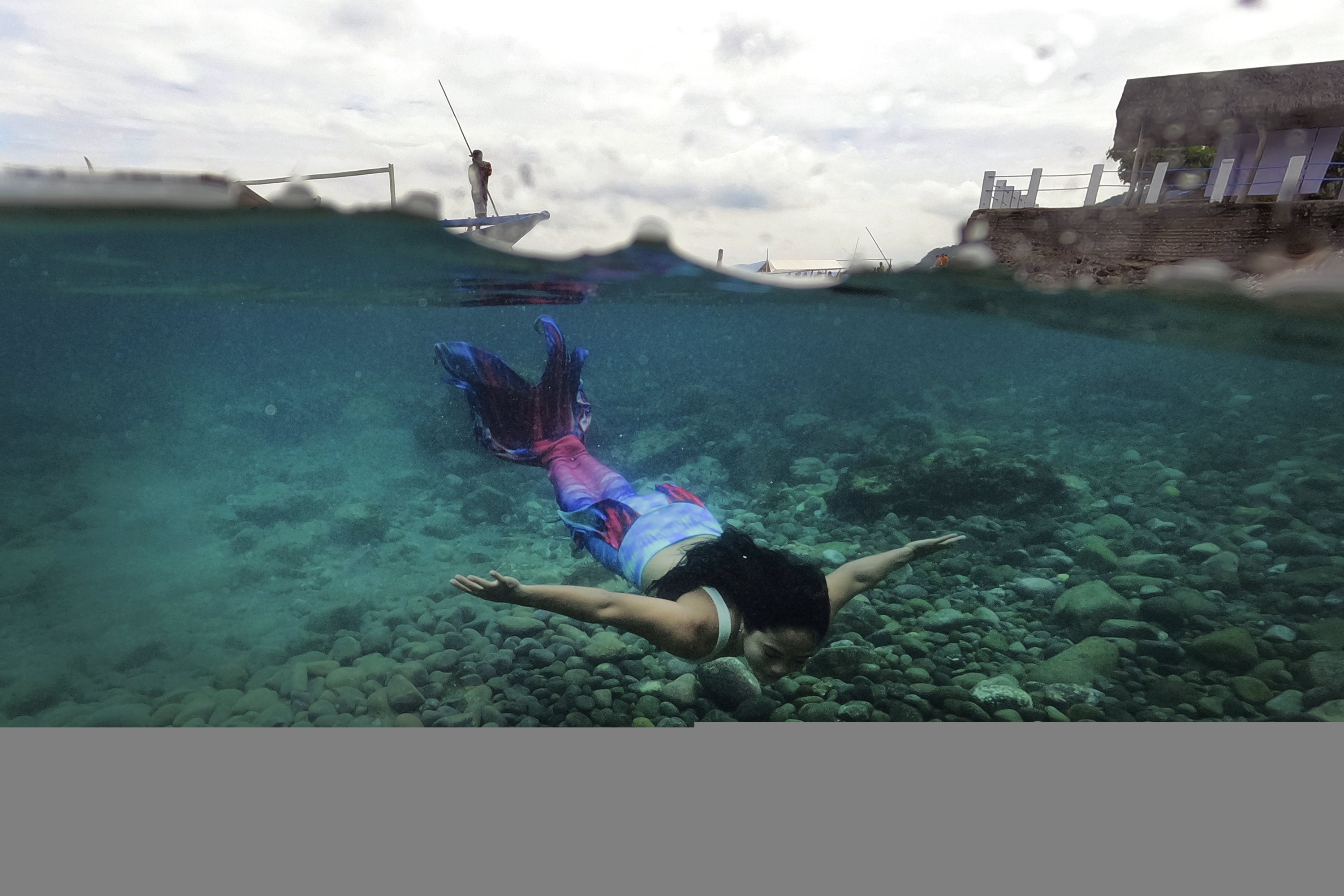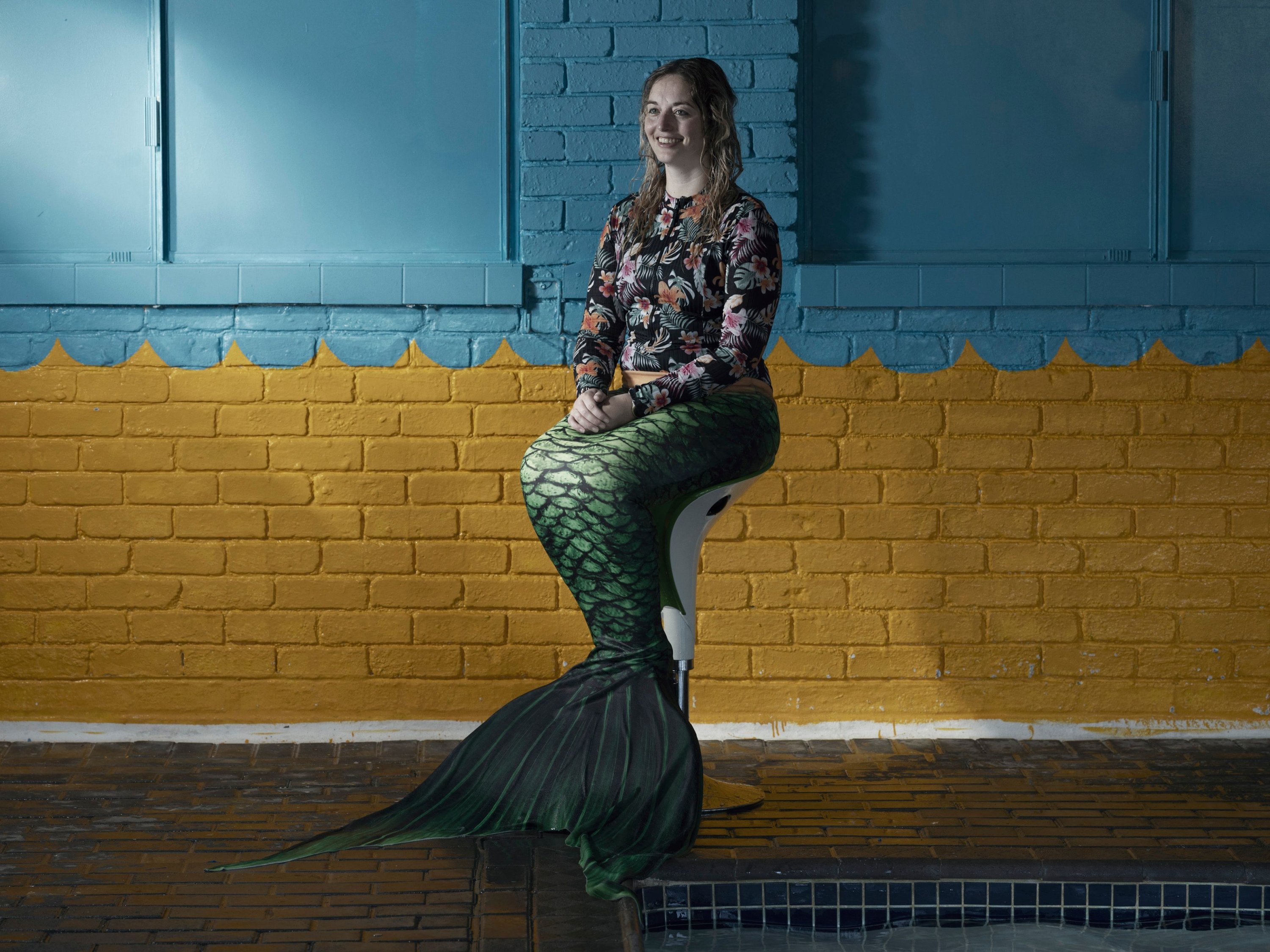© Turkuvaz Haberleşme ve Yayıncılık 2026
For a Filipina woman approaching middle age, seeing her legs encased in vibrant, scaly-looking neoprene three years ago was the realization of a childhood dream. And it marked the beginning of her immersion into a watery world. The former insurance company worker described the experience of gliding under water, half-human, and half-fish, as "meditation in motion.”
"The feeling was mermai-zing,” Tabora said one recent morning while lounging in a fiery red tail on a rocky beach south of Manila, where she now teaches mermaiding and freediving full-time. "The world outside is really noisy and you will find peace underwater. ... It’s a good skill in the real world, especially during the pandemic.”

Across the world, there is thousands more merfolk like her – at its simplest, humans of all shapes, and backgrounds who enjoy dressing up as mermaids. In recent years, a growing number have gleefully flocked to mermaid conventions and competitions, formed local groups called "pods,” launched mermaid magazines, and poured their savings into a multimillion-dollar mermaid tail industry.
On a planet plagued by war, disease, and social upheaval, many merfolk have found life in the water a refuge. Perhaps Sebastian, the ornery crab in the 1989 film "The Little Mermaid,” said it best in his warning to land-loving mermaid Ariel: "The human world, it’s a mess. Life under the sea is better than anything they got up there!”
Away from the critics and chaos of life on land, the mer-world is the kinder, gentler, and more joyful alternative to the real world. It is also a world, merfolk says, where you can be whoever and whatever you want.

The lure of mermaiding is clear from the Montreal home of Marielle Henault, which is stuffed to the gills with mermaid tails.
They line her clothes rack and drawers, are squeezed into suitcases, and drip from plastic storage tubs, ready for sale by the 31-year-old AquaMermaid CEO to "mers” the world over. About 20 tails belong to Henault herself.
"When you put your mermaid tail on at the beach or pool, you become a superstar,” says Henault, whose company runs mermaiding schools across Canada and the United States. "Kids and adults, everybody’s happy to see a mermaid!”
When mermaiding first started to catch on, most tails for sale were custom-made silicone creations that weigh up to 23 kilograms (50 pounds), cost upwards of $6,000, and take a surprising amount of time and lubricant to wrestle into. But over the past few years, the increasing availability of cheaper, lighter fabric options - some of which sell for less than $100 - has transformed the mermaiding community from an exclusive enclave for privileged professionals into an achievable dream for the wider public.
As mermaiding went mainstream, glamorous photos of mermaids resplendent in glitzy tails began gaining traction on social media, further fuelling mer-mania. An obsession with "The Little Mermaid” is common among the merfolk, and there is an anticipation of a fresh wave of mermaiding interest when a live-action reboot of the film is released next year.

Swimming in the tails takes practice and requires a piece of equipment long used by freedivers called a monofin - a single fin into which both feet are inserted. A mermaid’s mastery of the dolphin kick is key, along with equalization techniques to alleviate ear pressure underwater.
PADI, SSI, and NAUI, the world’s major scuba diving certification organizations, now offer mermaid courses. There’s even a World Mermaid Championship, last held in China in 2019, which featured 70 mermaids flipping and posing in a giant glass tank before a panel of pensive judges.
Henault, who competed at the world championship, hopes to help get mermaiding to the Olympics, potentially as a demonstration sport. Multiple "Merlympics” events have been held in Europe and the U.K. in recent years.
